#horpyna my beloved
Photo
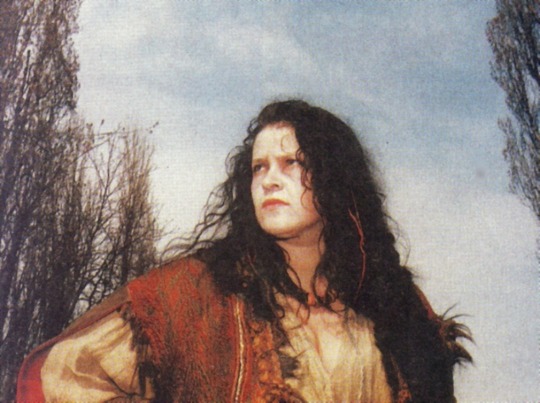
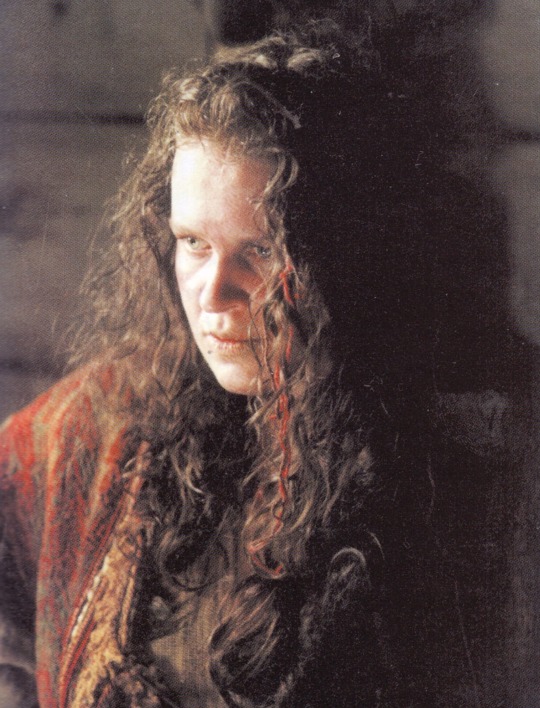
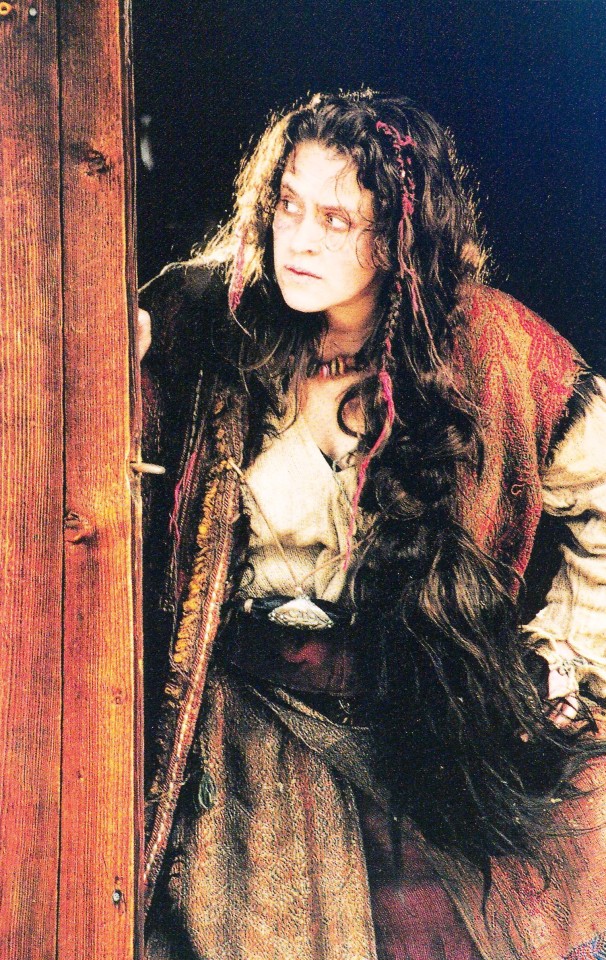

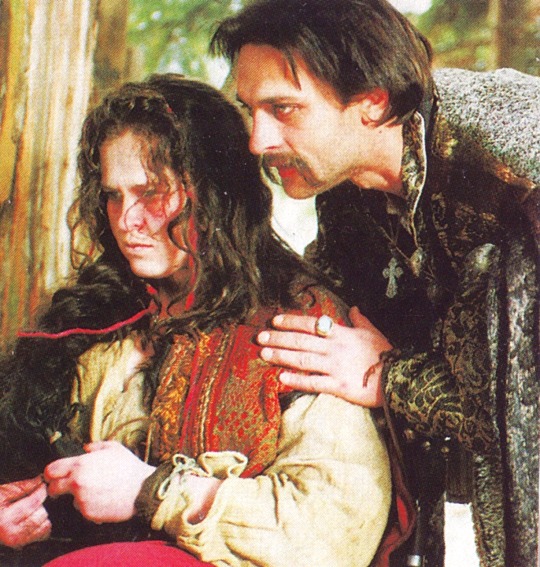
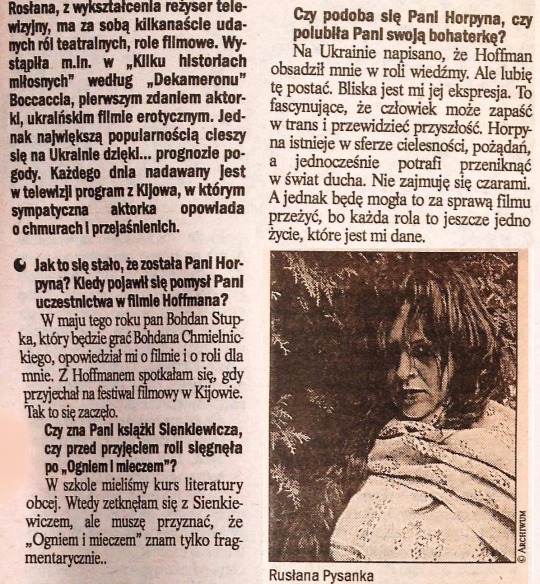


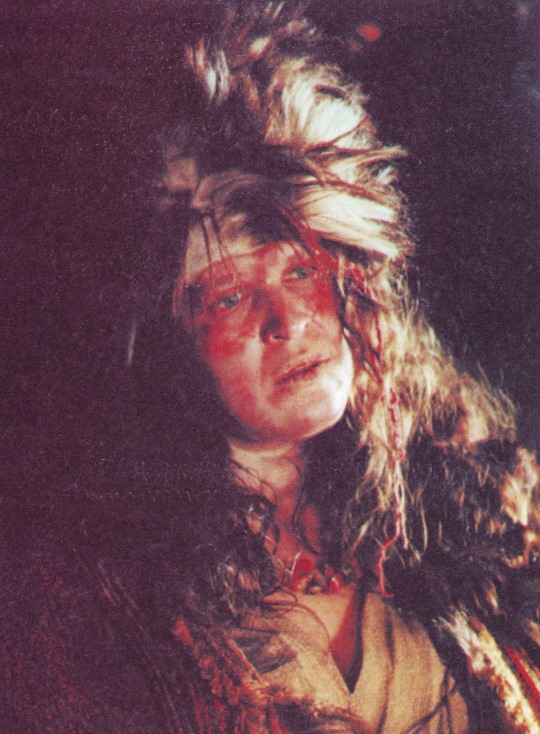

RUSLANA PYSANKA / Руслана Писанка
1965–2022
My Love, where have you gone? Pearls like you don’t fade out just like that…
Copyright belongs to the Photographers (Zenon Żyburtowicz, Mateusz Manikowski and Others)
An interview with the Actress has been published in: “Życie”, 230, 2.10.1997.
#ogniem i mieczem#with fire and sword#horpyna#Ruslana Pysanka#trylogia#trylogiarchive#polish movies#horpyna my beloved
178 notes
·
View notes
Photo

The Ukrainian actress, Ruslana Pysanka (Руслана Ігорівна Писанка / Писанко, 1965-2022) and Jerzy Hoffman.
Behind the scenes of the “With Fire and Sword”.
From my old collection of press cuttings/photographs from the Polish Press (1997–1999). It is a fan account existing only for the Polish & Ukrainian cultures glory. I don’t benefit from it. Copyright belongs to the Photographer (Zenon Żyburtowicz).
#ogniem i mieczem#with fire and sword#horpyna#Ruslana Pysanka#jerzy hoffman#henryk sienkiewicz#trylogia#polish literature#polish movies#horpyna my beloved#trylogia sensem życia
21 notes
·
View notes
Text

And here She is! My Beloved Horpyna!
This wonderful drawing has been created as a commission by a very talented Ukrainian artist, currently living in Zaporizhzhia: @thewoundedmind
As a reference, served a picture of Ruslana Pysanka (1965-2022) as Horpyna in J. Hoffman's film "With Fire and Sword" (1999):
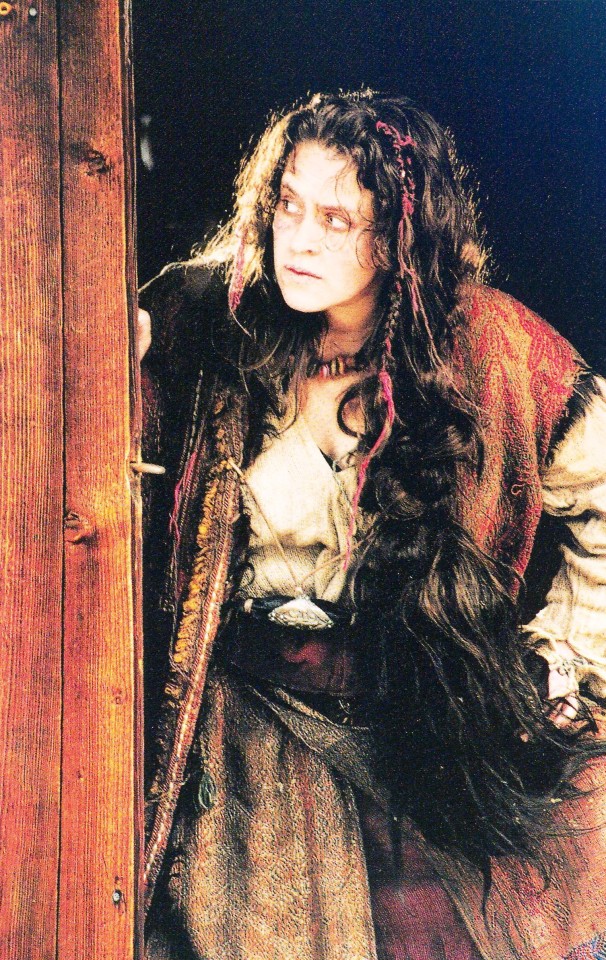
All information about "emergency commissions":
Thank you, dear Friend, for creating this!
#horpyna#ogniem i mieczem#with fire and sword#trylogia#henryk sienkiewicz#jerzy hoffman#ruslana pysanka#trylogiart#not my art#trylogia sensem życia#fanart#digital art#digital aritst#digitalart
115 notes
·
View notes
Text
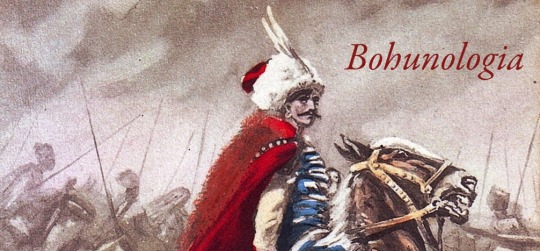
Jurko Bohun and romantic Cossack heroes from the writings of Juliusz Słowacki (1809–1849), one from the major figures of the Polish literature
Fragment of an article by Tadeusz Bujnicki (b. 1933), Professor of literary studies from the Jagiellonian University in Kraków, specializing himself in the Polish literature from the 19th century, and in particular - in Henryk Sienkiewicz's writings and their reception in the modern Polish culture. In his study he sums up the results of research of various scholars, showing us, to what extent H. Sienkiewicz was inspired by the Romantic tradition and the writings of Juliusz Słowacki (Beniowski, The Silver Dream of Salomea, Żmija):
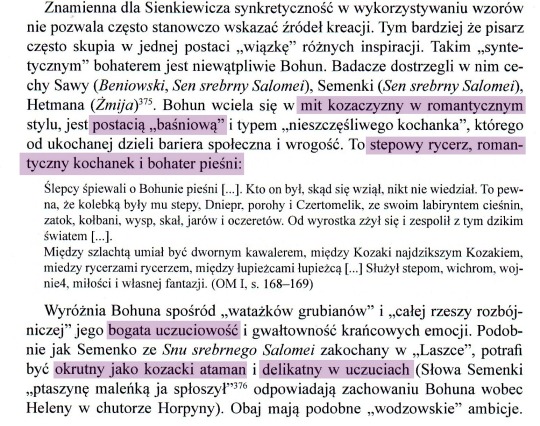

My imperfect English translation (quotations from the novel "With Fire and Sword" in Jeremiah Curtin translation):
The syncretism in using patterns, typical of Sienkiewicz, often makes it impossible to clearly indicate the sources of his inspiration. Moreover, the writer often brings together a “bundle” of various inspirations in one character. Bohun is undoubtedly such a “synthetic” hero. Researchers noticed in him the features of Sawa (Beniowski, The Silver Dream of Salomea), Semenko (The Silver Dream of Salomea), and Hetman (Żmija). Bohun embodies the Romantic Cossack myth, he is a “fairy-tale” character and a type of “tragic lover” who is separated from his beloved by a social barrier and hostility. He is a steppe knight, a romantic lover and a hero of (epic) songs:
Blind minstrels sang songs of Bohun […] Who he was, whence he had come, was known to no man. This much was certain, — the steppes, the Dnieper, the Cataracts, and Chertomelik, with its labyrinth of narrows, arms, islands, rocks, ravines, and reeds, had been his cradle. From childhood he had lived and communed with that wild world. […] Among nobles he knew how to be a polished cavalier; among Cossacks he was the wildest of Cossacks. In knightly company he was a knight; among robbers, a robber. […] He served the steppes, the whirlwinds, war, love, his own fancy.
Bohun is distinguished from the “rude leaders” and “the whole robber herd” by his rich emotionality and the fierceness of extreme emotions. Like Semenko from The Silver Dream of Salomea, being in love with “Laszka”, he can be cruel as a Cossack ataman and gentle in his feelings (Semenko’s words “I have scared the little bird” correspond to Bohun’s behaviour towards Helena in Horpyna’s cottage). They both have similar “leadership” ambitions. Bohun boasting to Helena (“I will […] give you half the Ukraine; for though I am a Cossack, not a noble, I am a bunchuk ataman. Under me are ten thousand men”), repeats Semenko’s words: “I was [...] brought up to be a hetman, not a peasant”. Bohun, despite the cruelty of his actions, the ruthlessness of revenge and savagery, is portrayed in the novel as a harmed person who does not deserve the reader’s condemnation. “The beautiful ataman” arouses sympathy as a tragic lover whose revenge drives him to Khmelnytsky’s camp.
Source: T. Bujnicki, Wpływ Słowackiego na Sienkiewiczowski obraz Ukrainy w Trylogii, [in:] idem, Trylogia w kontekstach, Kraków 2019, p. 141-142.
Another piece of "Bohunologia":
@pomarlisko, let's talk about Juliusz Słowacki;-)))
I don't know, how it is possible, that there was hardly nothing about all these connections between Słowacki and Sienkiewicz on my blog before...
#bohunologia#jurko bohun#ogniem i mieczem#with fire and sword#trylogia#henryk sienkiewicz#juliusz słowacki#romanticism#polish literature#polish heritage#cossack heroes#trylogia sensem życia
33 notes
·
View notes